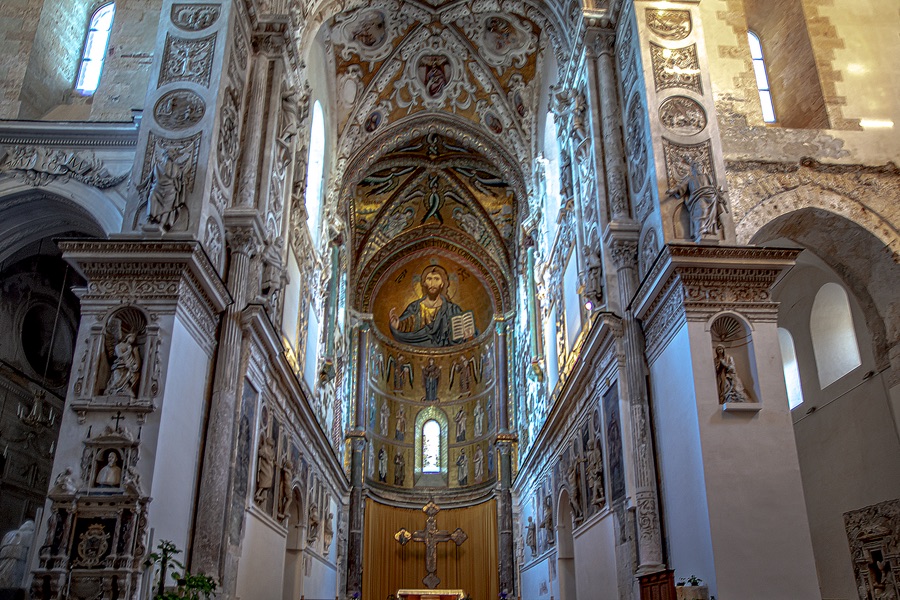In this context, the central
chapel
in the Cefalù Cathedral has a unique elongated shape which enhances its elevated volume, enclosed by two
ribbed cross vaults
, which virtually delimit the space of
Bema
.
At the front of the building, there are two symmetrically placed compartments in the side walls to connect the
Prothesis
and the
Diaconicon
, dedicated to liturgical services.
The interior decoration is conspicuously divided, at the two cross vaults, with mosaics covering the entire eastern part, including the basin and the
apsidal dome
. The western area, extending up to the elevation of the arch facing the
transept
is adorned with stuccoes and statues, commissioned by
Marco Antonio Gussio
in the mid-17th century.

The
Baroque style
was creatively used on this occasion to embellish this remaining part of the Bema, which was originally intended to house the medieval mosaics that completed the original iconographic programme.
Inside the Sanctuary, according to the Canonical Rite, the royal seat and the bishop’s chair were placed against each other on the walls, while in the centre, under the second cross of the Bema, decorated with mosaic images of
Seraphim and Cherubim
was the
ancient altar
, embellished with a gold altarpiece and surmounted by a precious
ciborium
.
Today, the Cathedral houses a
new altar
, made of bronze, cast in wax and finished in pure gold.
